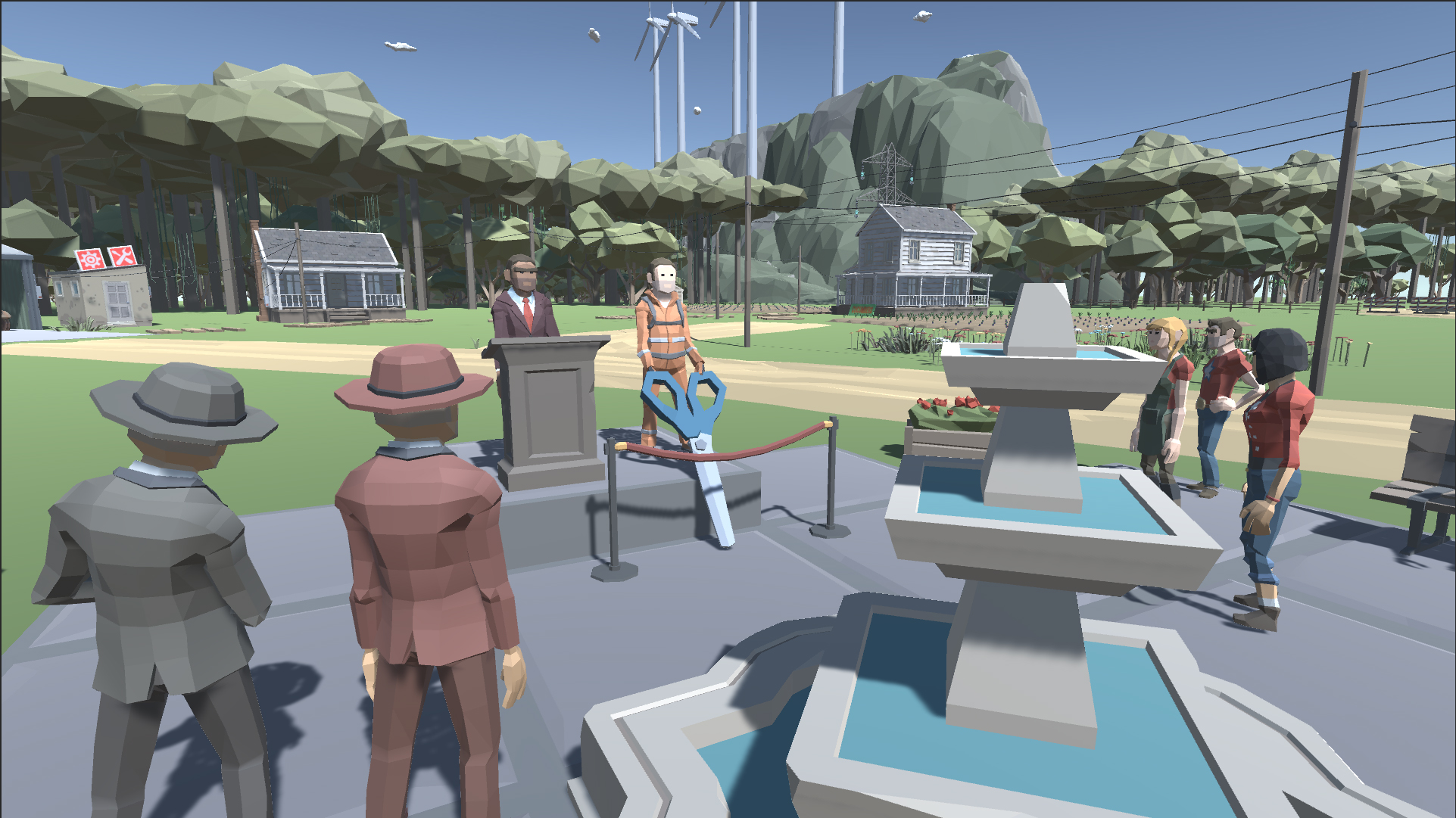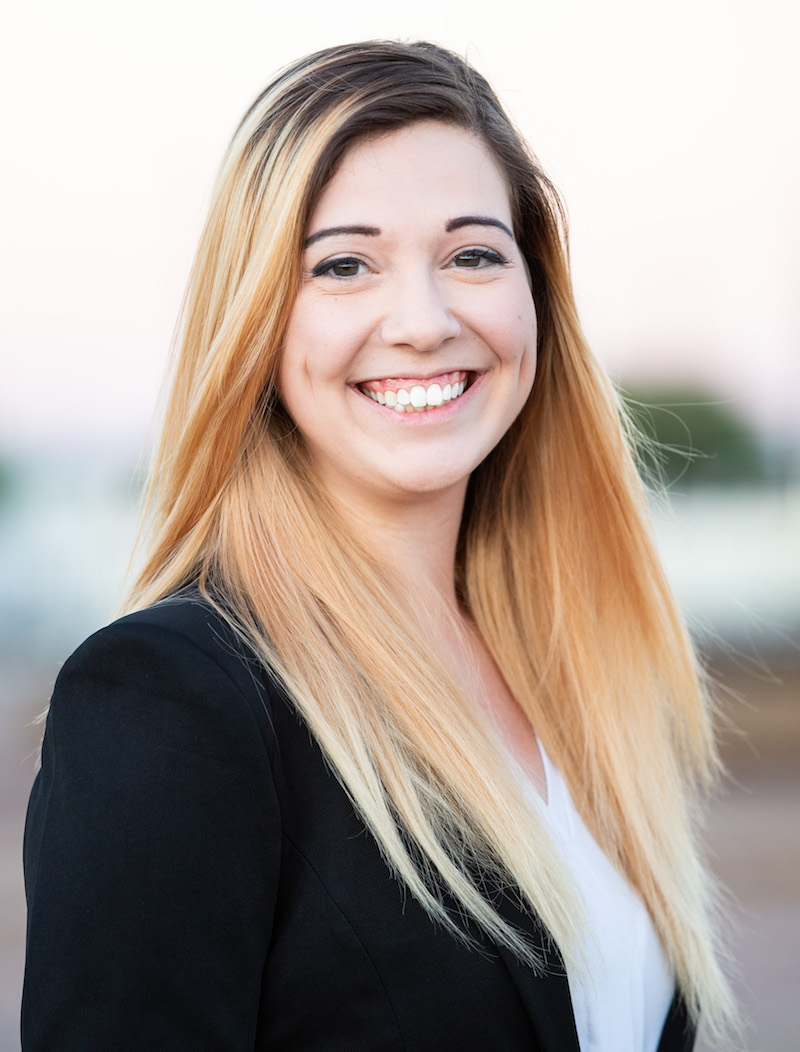
Polytechnic lab inspires youth to discover the future of energy

Above: A new workshop from ASU's Laboratory for Energy And Power Solutions introduces K-12 students to electricity microgrids and utility industry careers through a variety of fun activities, including a collaborative video game. Image courtesy of LEAPS
Electricity literally brightens our lives, but public understanding of its supply seems dim. Many people vaguely picture a central power plant emitting a hum of current through wires that crisscross a wide region. The reality is more complex and changing quickly, so a multidisciplinary team at Arizona State University is shining necessary light on the future of energy.
“Microgrid is a popular buzzword,” says Samantha Janko, managing director of the Laboratory for Energy And Power Solutions, or LEAPS, at The Polytechnic School, one of the six Ira A. Fulton Schools of Engineering at ASU.
“Imagine a remote community losing power after a major storm. Instead of waiting for distant help, a microgrid enables them to disconnect from the main utility grid and deliver electricity from local resources,” she says. “This means greater social and economic resilience, as well as more options to use renewable energy sources like solar, wind and water. Microgrids even offer a means for power customers to participate in the market as sellers.”
LEAPS researches, designs and creates technology solutions related to microgrids and other systems that can expand global access to electricity and improve the resilience of energy infrastructure. The lab group also delivers educational outreach and training services through an extensive workforce development program.
“Our microgrid boot camps for university students and working adults are particularly successful because we take a very holistic approach,” Janko says. “We discuss the context of energy systems, their design, assembly, operation and maintenance. We cover the full life cycle of power provision, as well as how to make it reliable and resilient.”
LEAPS has applied the same mindset to create a new K-12 curriculum as a part of a three-year grant from the Office of Naval Research STEM program. Janko says her team knows that greater awareness of the energy sector is necessary in primary and secondary education, so they are working to make the most of this funding opportunity.
Empowering new perspective
One result is a novel workshop using microgrids to introduce youth to key aspects of electricity production, transmission, distribution, renewable power sources and careers in the energy industry. Microgrid-On-a-Desk, or MOD, promotes learning through play as students design and build using representative components of a small microgrid.
“With elementary school students, we start with basics like ‘what is electricity?’ and ‘how is electricity created?’,” Janko says. “For high school classes, we can begin with a discussion about how electricity actually gets to our houses. This quickly leads to explanations of grid systems and the nuts and bolts of power transmission and distribution.”
In addition to the technology, students learn about careers that generate and supply energy: engineering, marketing, finance, legal and more. Janko says her team wants to inspire students to consider work in the energy sector and the different ways that can happen.
LEAPS conducted a first pilot workshop with fifth-graders at Desert Vista Elementary School in February, when classes were still held on site. Janko says that initial effort was very successful with staff support in the classroom from Arizona Public Service, which serves as an adviser for the lab group. APS also provided important advice for a video game portion of LEAPS’ high school curriculum. The utility’s input verified that electrical substations and other aspects of a power grid look and function accurately in the game.
A second pilot workshop was scheduled for early May at the ASU Prep Poly STEM High School. Janko said they planned similar hands-on, learning-through-play experiences with components and other resources brought to the classroom. The full workshop was set to span four hours of content delivered across three days of classes.
“Then it became clear COVID-19 was not going to permit a return to school in-person this spring,” Janko says. “But we didn’t want to give up, so we spoke with the teacher about trying an alternative format using the Zoom videoconferencing platform. She was enthusiastic, and we adapted the content for remote delivery.”
The LEAPS team was equally enthusiastic about converting the content. Alexander Mobley, LEAPS equipment test site manager and a member of the pilot workshop team, said successful migration required more creativity than just making MOD materials digital.
“We wanted to preserve some hands-on command function for the computer-based or tablet-based components,” he says. “We recognize that some students learn visually while others learn through tactile activity. Achieving a marriage of those two learning modes is really best for everyone’s experience.”
The team also condensed the program to just a couple of hours across two days, recognizing the limits of student focus at a keyboard. Fortunately, the teacher had just finished a unit on renewable energy with her classes, which permitted LEAPS to prune some of the basics from the start of the workshop.
Janko says the rapid pace required for their adaptation was a challenge with a mix of results. For example, the workshop’s drawing activity was less exciting than when held in a physical classroom. Most students prefer working side-by-side with peers on giant pieces of butcher paper.
“At the same time, the online chat function proved more successful than expected,” she says. “It sometimes happens in a traditional classroom that students go quiet when visitors show up. But with online chat, they were very open to expressing themselves in response to us and each other. That was great to see.”
Applying lessons learned
As a whole, Janko says the experience proved engaging and enlightening for the students. The team also received excellent feedback from participants to help refine the workshop for other school groups and different training audiences.
“For example, we have a support relationship with the University of Alaska Fairbanks. We helped with a microgrid boot camp there last year, and we planned to travel north to help with one this spring,” Janko says. “Then the pandemic required moving the event online, but the timing was perfect. It was just one week after the high school workshop, so we were able to apply a great deal of what we learned about keeping people engaged through digital polls, chat, screen sharing and more to offer a great experience.”
Janko says her academic peers in Alaska already send students into rural villages to work on microgrids. With such a large and sparsely populated landscape, the idea of local power generation is not new there. But Janko says LEAPS provides advanced technology and design processes, and it is rewarding to extend Fulton Schools expertise in such an immediately meaningful way.
Janko also says that the LEAPS workforce development team has been working for two years on an online version of training content.
“Now, with the advent of COVID-19, we are pushing this effort forward to completion,” she says. “This fall we can release our first 60 hours of digital material for a self-paced, continuing education course on microgrid design.”
Mobley points out that workshops, online courses and other avenues for energy content are crucial for the future of the industry.
“Traditionally, new talent entered the field through apprenticeship. People moved from a call center position to work as a lineman and then as a supervisor,” he says. “But those opportunities are not as prevalent, even as our demand for energy intensifies. Consequently, we have a generation of workers who are near retirement while fewer people are entering the industry. It’s vital that we raise awareness and inspire interest across a new generation.”




































